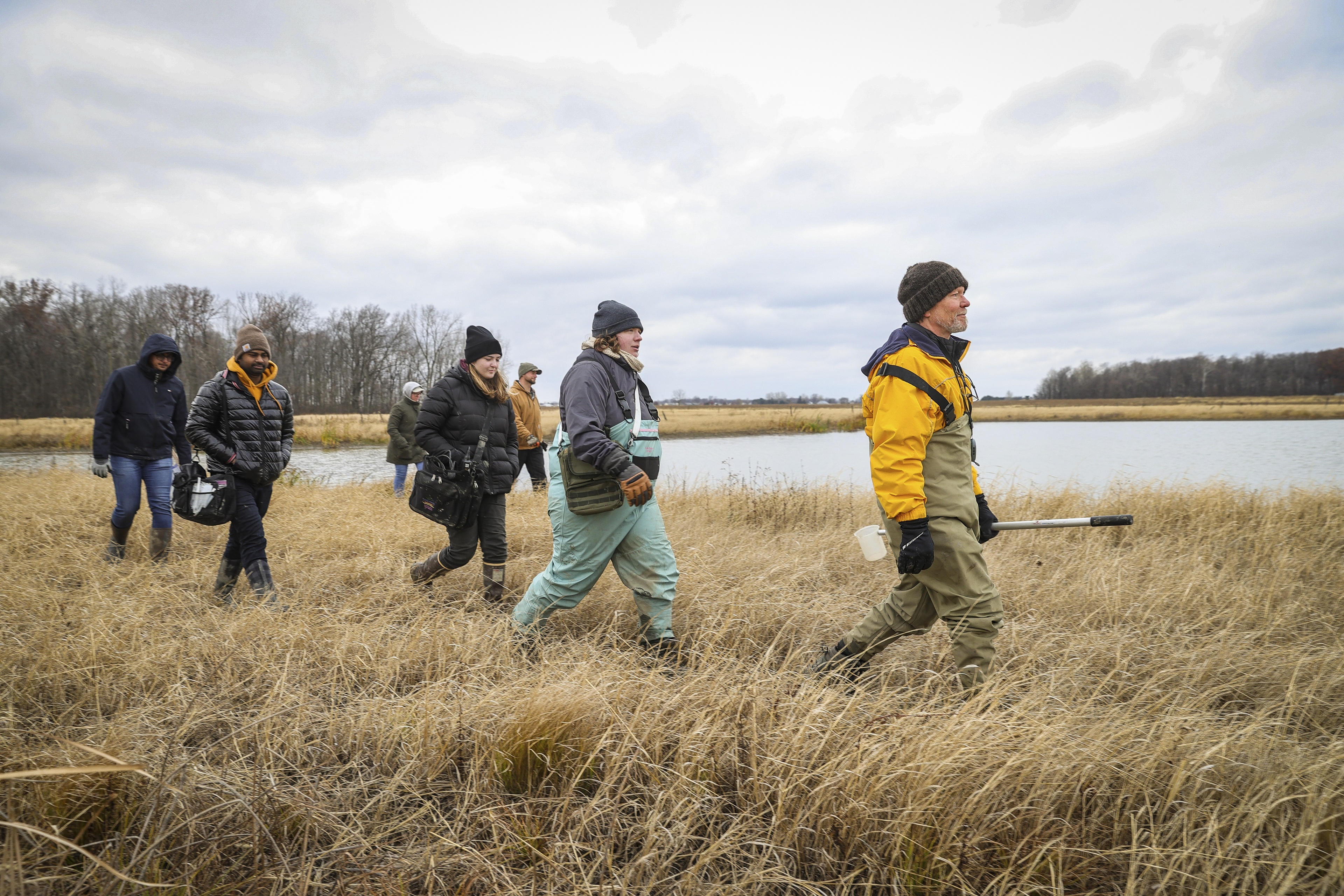Researchers from BGSU began formally monitoring wetlands in April and May of 2021 with about 15 wetlands projects, but more and more are being approved and completed by the month. As of now, 122 wetlands have been approved, though not all of them have been built yet.
Wetlands are slated to be monitored through at least 2031 so researchers can understand the full picture of how nutrients enter and exit wetlands, how long wetlands remain effective and which types of wetlands are most effective.
“To know what they can really do, the monitoring has to be at least that long,” McCluney said of the 10-year timeline. “Some wetlands also reach a point of saturation where they're not able to sequester nutrients, and we want to know what that point is and whether different kinds of wetlands reach that point at different speeds.”
The wetlands research is just an example of the work being done by a group of faculty and students at BGSU who focus on research related to the Great Lakes and Watershed Studies.
Meeting the moment
The scale at which plant, water and soil monitoring is being done to understand wetlands’ effect on nutrient transport can seem daunting, but the importance of the work is not lost on any of the BGSU scientists.
One of the hallmarks of the project, Michaels said, is how well researchers work together to understand how well wetlands can address the larger issue of toxic algal blooms.
“The real strength of this group is the collaboration - and not just the vegetation team, but across all the other institutions where expertise from so many different disciplines is being brought to bear on each of the areas of focus,” she said. “It’s very unique in that regard.”
Midden said the amount of collaboration involved with H2Ohio gives researchers “an unprecedented opportunity” to shed light on wetlands’ effect on phosphorous and nitrogen transport, a specific question that impacts every stakeholder who relies upon Lake Erie.
“There have been other studies that have focused on wetlands, but none that focuses on this particular question with this particular level of expertise and this particular level of resources,” Midden said. “It’s very exciting because we have the propensity to learn more about this issue than has ever been learned before.”

